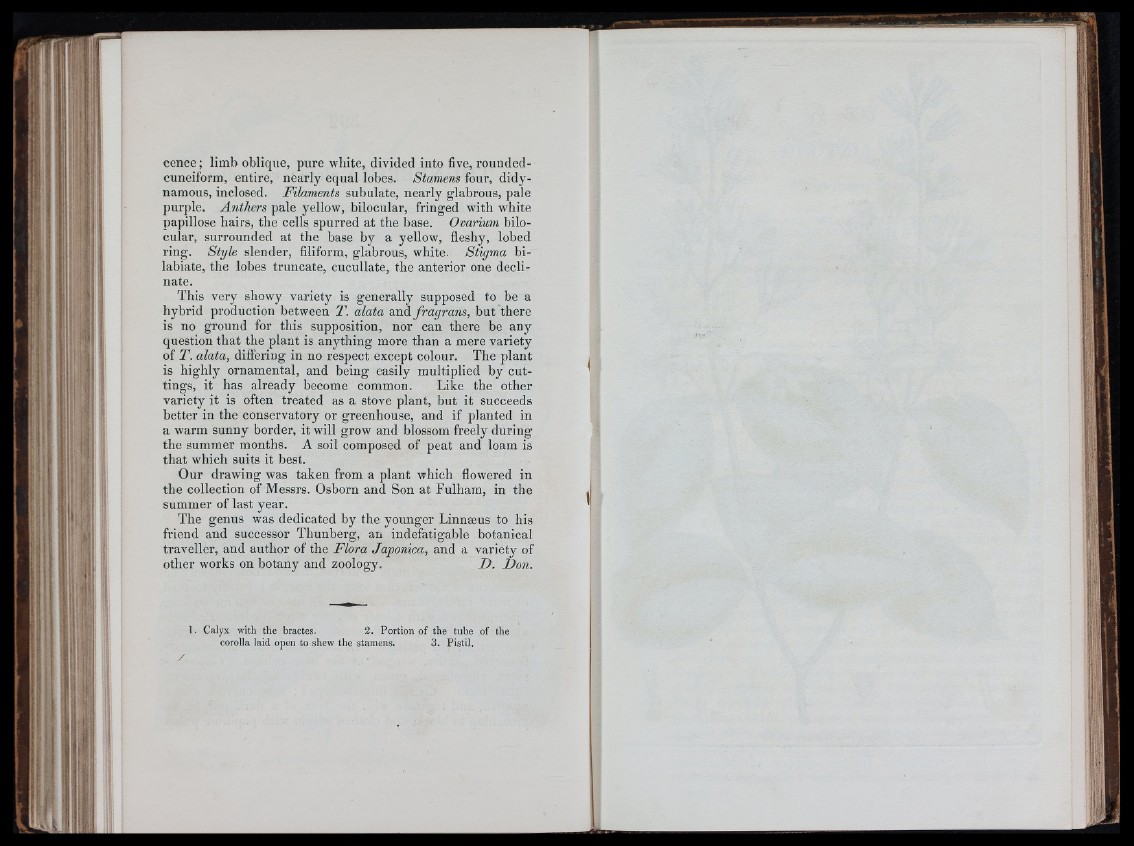
cence ; limb oblique, pure white, divided into five, rounded-
cuneiform, entire, nearly equal lobes. Stamens four, didynamous,
inclosed. Filaments subulate, nearly glabrous, pale
purple. Anthers pale yellow, bilocular, fringed with white
papillose hairs, the cells spurred at the base. Ovarium bilo-
cular, surrounded at the base by a yellow, fleshy, lobed
ring. Style slender, filiform, glabrous, white. Stigma bilabiate,
the lobes truncate, cucullate, the anterior one declinate.
This very showy variety is generally supposed to be a
hybrid production between T. alata and fragrans, but there
is no ground for this supposition, nor can there be any
question tha t the plant is anything more than a mere variety
of T. alata, diflering in no respect except colour. The plant
is highly ornamental, and being easily multiplied by cuttings,
it has already become common. Like the other
variety it is often treated as a stove plant, but it succeeds
better in the conservatory or greenhouse, and if planted in
a warm sunny border, it will grow and blossom freely during
the summer months. A soil composed of peat and loam is
that which suits it best.
Our drawing was taken from a plant which flowered in
the collection of Messrs. Osborn and Son at Fulham, in the
summer of last year.
The genus was dedicated by the younger Linnæus to his
friend and successor Thunberg, an indefatigable botanical
traveller, and author of the Flora Japónica, and a variety of
other works on botany and zoology. D . Don.
1. Calyx with the bractes. 2. Portion of the tube of the
corolla laid open to shew the stamens. 3. Pistil.